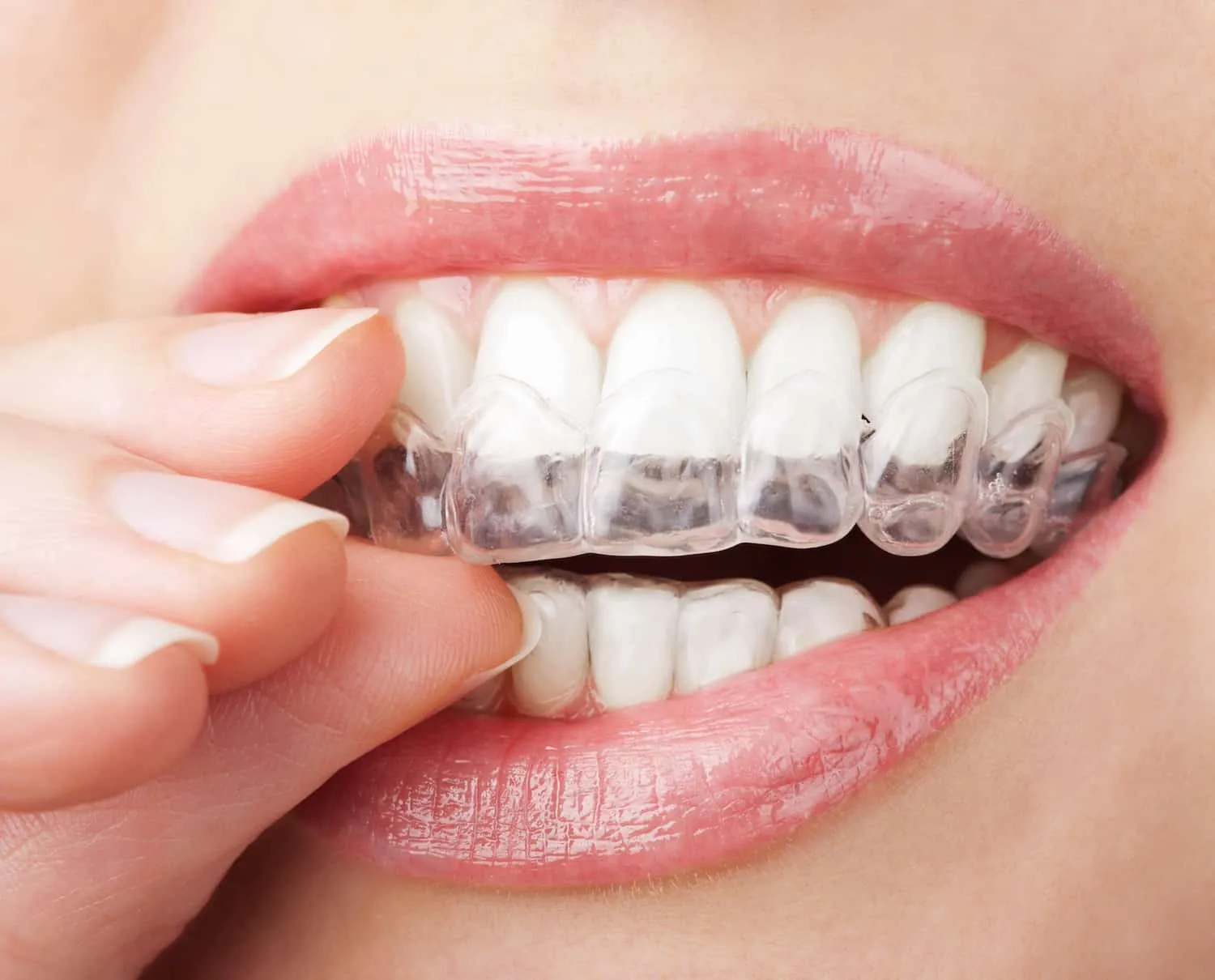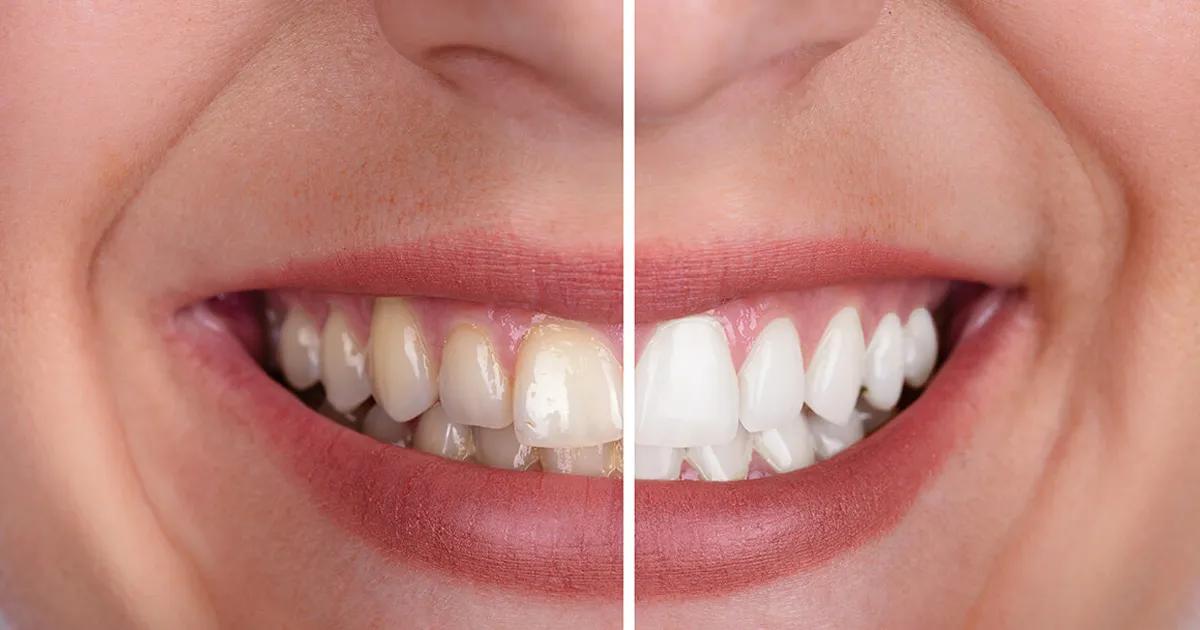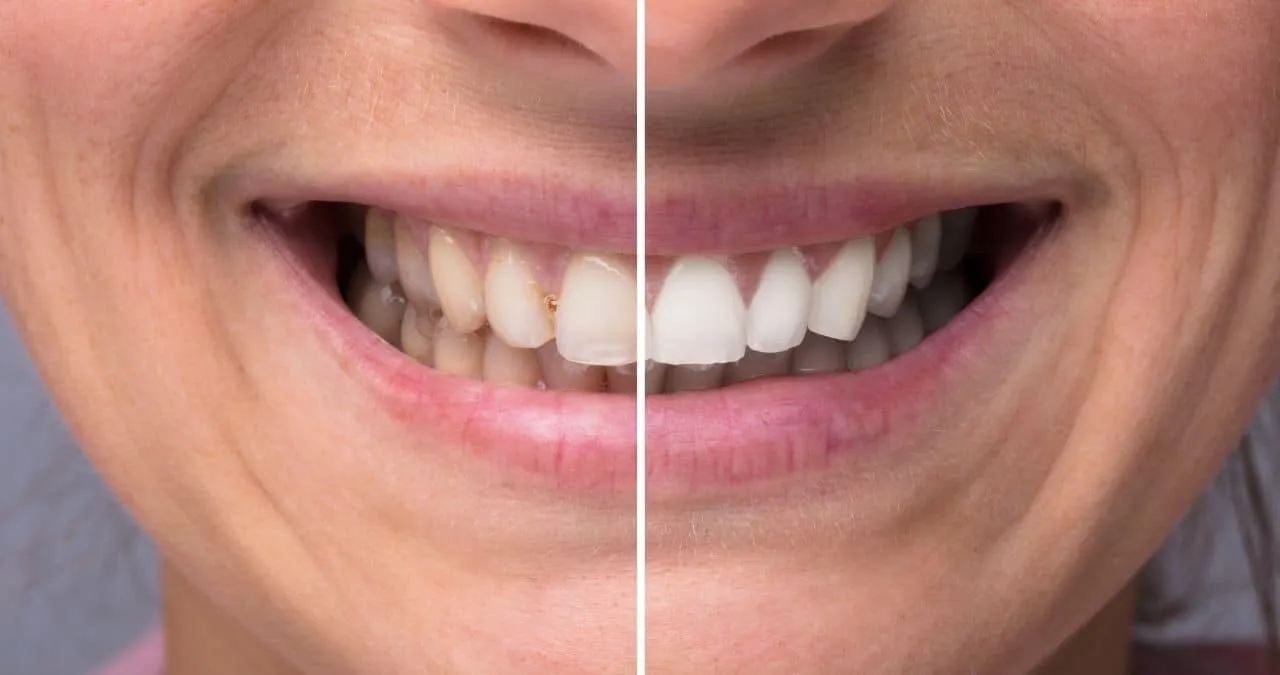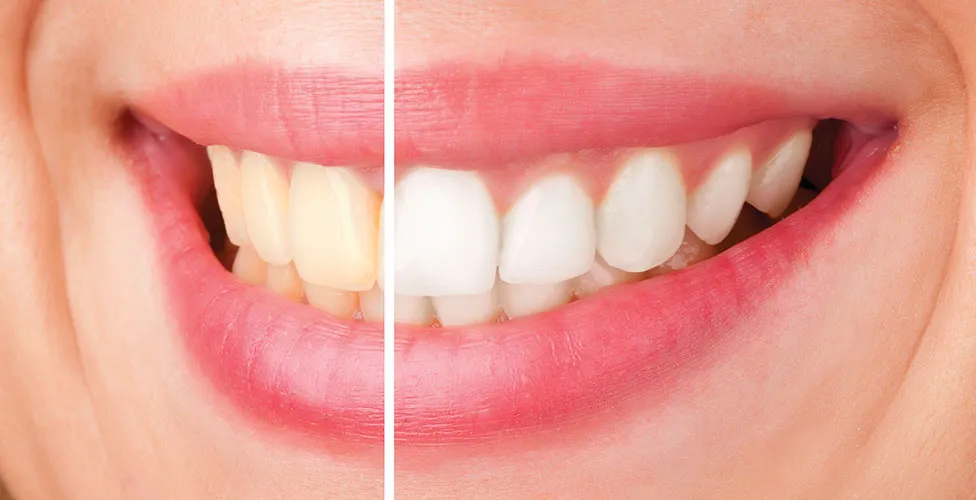The Reality of Teeth Whitening Dangers
Teeth whitening has surged in popularity, offering the promise of a brighter, more confident smile. However, behind the dazzling results lie potential risks and side effects that many people overlook. While teeth whitening is generally safe when done correctly, understanding the potential dangers is crucial. This article dives into the top 5 facts about the dangers of teeth whitening, helping you make informed decisions about your oral health. From tooth sensitivity and gum irritation to enamel erosion and allergic reactions, we’ll explore the hidden risks and what you can do to mitigate them. It’s important to weigh the cosmetic benefits against the potential downsides to ensure your pursuit of a perfect smile doesn’t compromise your dental health. Knowledge is power, and being aware of these dangers is the first step toward a safer whitening experience. Let’s explore the facts, so you can smile with both confidence and peace of mind.
Tooth Sensitivity Explained
Tooth sensitivity is perhaps the most common side effect associated with teeth whitening. This heightened sensitivity to hot, cold, sweet, or sour foods and drinks occurs because the whitening agents can penetrate the enamel and reach the dentin, the layer beneath the enamel that contains nerve endings. This penetration can irritate the nerves, leading to temporary discomfort. The intensity of sensitivity varies from person to person and depends on factors such as the concentration of the whitening agent, the duration of exposure, and the individual’s natural tooth sensitivity. Typically, sensitivity is temporary, subsiding within a few days or weeks after completing the whitening treatment. However, understanding the causes of tooth sensitivity is vital for minimizing its impact and ensuring a comfortable whitening experience.
Causes of Tooth Sensitivity

The primary cause of tooth sensitivity during whitening is the presence of active ingredients like hydrogen peroxide or carbamide peroxide. These chemicals work by breaking down stains on the teeth, but they can also temporarily weaken the enamel structure. Other factors that can contribute to sensitivity include the concentration of the whitening agent; higher concentrations often lead to increased sensitivity. Additionally, the method of whitening, whether it’s in-office, at-home trays, or whitening strips, can influence the level of sensitivity experienced. Individual tooth characteristics also play a role; people with naturally thin enamel or pre-existing sensitivity are more prone to discomfort. It is vital to recognize these causes to choose appropriate whitening methods and products and prevent unnecessary pain and discomfort during the process.
Overuse of Whitening Products
Overuse of teeth whitening products significantly increases the risk of tooth sensitivity. Following the recommended guidelines for application is essential. Frequent or prolonged use of whitening agents, even those available over-the-counter, can lead to excessive penetration of the enamel and increased irritation of the tooth’s nerves. This overuse can result in prolonged and severe sensitivity, making it difficult to enjoy your favorite foods and drinks. Therefore, adhering to the instructions provided by your dentist or on the product packaging is crucial. It is better to space out whitening treatments and monitor your teeth for any signs of sensitivity. If sensitivity occurs, it’s essential to reduce the frequency of use or consult a dentist for guidance. Patience is key; achieving a brighter smile should not come at the cost of your dental comfort and well-being. Avoid the temptation to whiten more often than recommended, as this can lead to unnecessary and potentially damaging side effects.
Gum Irritation and Damage
Gum irritation is another potential side effect of teeth whitening. The strong chemicals used in whitening products can come into contact with the soft tissues of the gums, causing inflammation and discomfort. This irritation can manifest as redness, swelling, and soreness in the gums, and in severe cases, it can even lead to chemical burns. The severity of the irritation depends on the concentration of the whitening agent, the duration of exposure, and the individual’s sensitivity. Proper application of the whitening product is vital to minimize contact with the gums. Using custom-fitted trays or following the instructions carefully when using strips can help prevent the whitening agent from seeping onto the gum tissues. Addressing gum irritation promptly is essential to avoid more serious complications and ensure your oral health.
What Causes Gum Irritation

The primary cause of gum irritation from teeth whitening is the direct contact between the whitening agents and the gum tissue. Hydrogen peroxide and carbamide peroxide are potent chemicals and can be irritating if they come into contact with the gums. This contact can occur due to poorly fitted trays that allow the whitening gel to leak onto the gums or improper application of whitening strips, which can lead to overflow onto the gums. Excessive amounts of whitening product used can also increase the risk of gum irritation. Additionally, certain individuals may have more sensitive gums, making them more susceptible to irritation from even a minimal amount of contact with the whitening agent. Being aware of the causes can help you take preventive measures, such as using custom-fitted trays and carefully following the instructions to minimize the risk.
Preventing Gum Damage
Preventing gum damage from teeth whitening involves several key strategies. Always use custom-fitted trays if using at-home whitening kits, as they provide a better seal, preventing the whitening agent from seeping onto the gums. Carefully follow the product instructions, ensuring you do not overload the trays with the whitening gel. Apply the gel with precision, avoiding any contact with the gums. If using whitening strips, ensure they are correctly placed, covering only the teeth and avoiding any overlap onto the gums. If you experience any gum irritation, stop using the product and consult your dentist. They may recommend a less concentrated whitening agent or alternative methods to minimize the risk of further damage. Regular dental checkups and professional cleanings are also crucial for maintaining healthy gums and preventing any complications associated with teeth whitening.
Enamel Erosion the Hidden Risk
Enamel erosion is a significant but often overlooked risk of teeth whitening. While the goal is to brighten your smile, the whitening agents can, in some cases, weaken the tooth enamel over time. Enamel is the hard, protective outer layer of your teeth, and it shields the underlying dentin from damage. When enamel erodes, the dentin becomes more exposed, leading to increased sensitivity and a higher risk of cavities and other dental problems. The extent of enamel erosion depends on the concentration of the whitening agent, the frequency of use, and the duration of exposure. Moreover, the quality of your enamel can also play a role. Those with naturally thin or porous enamel are more susceptible to erosion. Taking steps to protect your enamel during teeth whitening is, therefore, essential to preserving your long-term oral health.
Understanding Enamel

Understanding enamel is crucial to comprehending the potential dangers of teeth whitening. Enamel is the strongest substance in the human body, composed primarily of minerals, such as calcium phosphate. It protects the sensitive inner layers of your teeth from the wear and tear of daily use, as well as from the acids produced by bacteria in your mouth. Enamel is also responsible for the color of your teeth; its translucency allows the underlying dentin to show through, influencing the overall shade. Over time, enamel can be worn down by various factors, including acid erosion from food and drinks, teeth grinding, and aggressive brushing. Preserving the integrity of your enamel is vital for overall oral health. Any cosmetic treatment, including teeth whitening, should consider the impact on enamel health and take steps to minimize potential damage.
How Whitening Affects Enamel
Teeth whitening agents, particularly those containing hydrogen peroxide or carbamide peroxide, can affect enamel in several ways. These agents work by penetrating the enamel to break down stain molecules, but in doing so, they can also temporarily weaken the enamel structure. The high acidity of the whitening agents can cause the enamel to lose minerals, leading to demineralization. This process can make the enamel more porous and susceptible to damage from acids and other irritants. Over time, repeated whitening treatments can exacerbate the erosion process, leading to increased sensitivity and an increased risk of cavities. It is essential to use whitening products responsibly, following the instructions carefully and avoiding overuse. Additionally, using fluoride-containing products, such as toothpaste or mouthwash, can help remineralize the enamel and counteract some of the adverse effects of teeth whitening.
Risk of Allergic Reactions
Although rare, allergic reactions to teeth whitening products are possible. The ingredients in these products, such as hydrogen peroxide, carbamide peroxide, or other additives, can trigger an allergic response in sensitive individuals. Symptoms can range from mild to severe, and it is essential to be aware of the potential risks. If you have a history of allergies, it is crucial to consult with your dentist before starting any teeth whitening treatment. They can help you identify potential allergens and recommend products that are less likely to cause a reaction. Always perform a patch test, if recommended, before using a whitening product to assess for any adverse effects. Being proactive and cautious can help you minimize the risk and ensure a safe and positive teeth whitening experience.
Ingredients to Watch Out For

Several ingredients in teeth whitening products can potentially trigger allergic reactions. The primary active ingredients, hydrogen peroxide and carbamide peroxide, are common culprits. These chemicals, while effective at whitening teeth, can cause irritation or allergic responses in some individuals. Other additives, such as flavoring agents, preservatives, or stabilizers, can also cause allergic reactions. Artificial flavors like peppermint or spearmint, which are frequently used in whitening products, can be allergens for certain individuals. Additionally, some whitening strips or trays might contain latex or other materials that can cause allergic responses. Carefully review the ingredient list of any teeth whitening product you plan to use. If you have known allergies or sensitivities, consult with your dentist or allergist to determine which products are safe for you.
Symptoms of an Allergic Reaction
Recognizing the symptoms of an allergic reaction is essential if you’re undergoing teeth whitening. Mild symptoms might include itching or tingling around the gums, lips, or tongue. More severe reactions can include swelling of the lips, tongue, face, or throat, difficulty breathing, or a rash. In extreme cases, an allergic reaction can lead to anaphylaxis, a life-threatening condition that requires immediate medical attention. If you experience any of these symptoms after using a teeth whitening product, stop using the product immediately. Contact your dentist or seek medical attention. Keep a record of the symptoms and the product used to help your healthcare provider identify the allergen. Prompt action can prevent serious complications and ensure your safety.
Unexpected Side Effects of Teeth Whitening
In addition to the more commonly known risks of teeth whitening, there are a few unexpected side effects that people might experience. These less frequent occurrences highlight the importance of being well-informed and cautious. While the majority of individuals have a safe and positive experience, it’s good to be aware of what could potentially arise. The unexpected side effects can vary in severity, so it is important to discuss any unusual symptoms with your dentist. They can assess the situation and offer the best advice. Understanding these less common side effects can help you make more informed decisions about your teeth whitening journey.
Changes in Tooth Color

Changes in tooth color is one of the unexpected side effects of teeth whitening. While the goal is to achieve a brighter, more uniform smile, sometimes the results can be uneven or lead to an undesirable color shift. For instance, teeth might not whiten evenly. This is especially true if you have fillings, crowns, or other dental work, as these will not whiten in the same way as your natural teeth. In other cases, the whitening process can make teeth appear translucent or even slightly bluish. These color changes depend on the individual’s tooth structure and the whitening method used. If you are concerned about unexpected color changes, consult your dentist. They can assess the situation and recommend strategies to improve the appearance.
Effect on Existing Dental Work
Teeth whitening does not affect existing dental work in the same way as natural teeth. Fillings, crowns, veneers, and other restorations are made from materials that do not respond to whitening agents. This means that your natural teeth may whiten while the dental work remains the same shade, resulting in a mismatched appearance. This is another of the more unexpected side effects of teeth whitening. It is crucial to discuss the potential impact of teeth whitening on your dental work with your dentist before starting treatment. They can evaluate the condition of your restorations and advise you on the best approach. In some cases, you might need to replace existing dental work to achieve a consistent and natural-looking smile. Planning your teeth whitening journey is essential to ensure you achieve your desired results without any aesthetic disappointments.
Conclusion
Teeth whitening offers a popular and effective way to enhance your smile, but it’s essential to be aware of the potential dangers. From tooth sensitivity and gum irritation to enamel erosion and allergic reactions, the risks are real and should not be ignored. Understanding these potential side effects is critical to making informed decisions about teeth whitening. By being aware of the risks, using products responsibly, and consulting with your dentist, you can minimize the chances of adverse outcomes and protect your oral health. Weigh the cosmetic benefits against the potential downsides, and always prioritize the health and integrity of your teeth. A bright smile is a great asset, but it should not come at the expense of your overall well-being. Make the right choices to achieve a beautiful, healthy smile safely and confidently.
